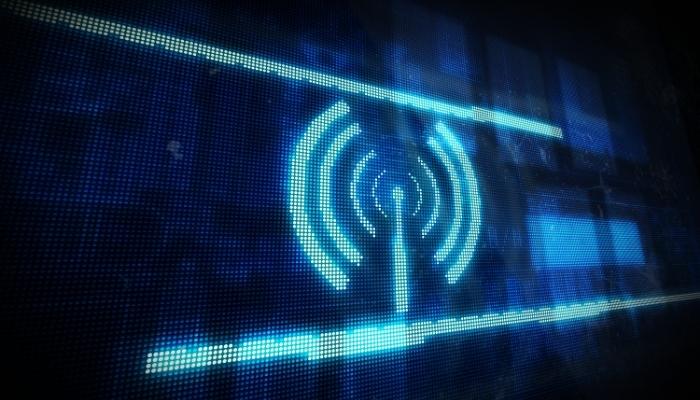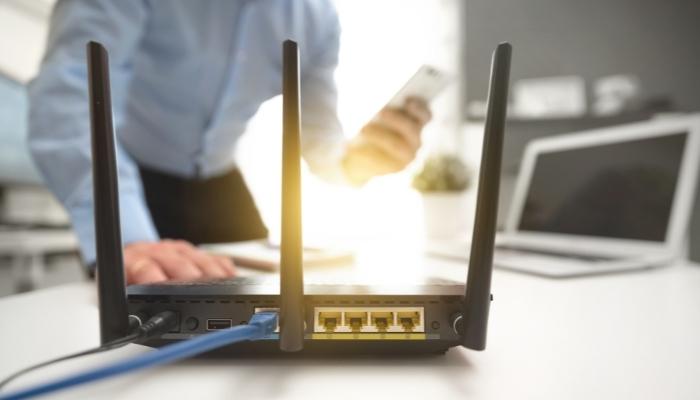A smart home makes everything easier, but not when it's overloading your Wi-Fi. So, to avoid that, you first need to find out whether your network can handle streaming your favorite shows, working on a laptop, and running your smart hub.
And while there are several ways to connect your smart home network, it's best to let the professionals handle it. They handle things like checking which bands to use (2.4 or 5 GHz) and whether to set up a different network or router while making the connection seamless!
To give you an idea of what you need, we’ve done some digging on the network logistics your custom installers will consider, so check it out!
Do you need a smart home network?

The first question you should ask yourself is whether or not your smart home devices can connect to the internet without a dedicated smart home network. Many smart home devices can connect to the internet via your existing Wi-Fi network. However, it can cause issues with your bandwidth if you have video-supported devices.
With a dedicated network or a separate router, you can lump all your smart devices together to free up your bandwidth and get the most out of your smart home tech. Plus, having a separate network makes it more difficult for hackers to access your information — they'll only be able to access the connected smart devices!
Whichever your smart home automation needs, your custom installers will figure it out for you!
What type of connection do you need for your smart devices?
The next consideration is what type of connection you need for your smart devices. Most smart devices will use either a wired Ethernet or a Wi-Fi connection. But there are other types, too, including Z-wave and Zigbee, which use radio waves on frequencies that are different from your Wi-Fi frequencies.
- Wi-Fi Connection is reliable and comes in 2.4 GHz with a longer range and 5 GHz bands featuring faster speeds.
- Bluetooth Low Energy is capable of mesh networking and has improved range and government-grade encryption.
- Zigbee/Z-Wave has zero impact on your Wi-Fi network and frees up bandwidth (although your smart hub will need to connect to the internet).
- Insteon uses a mesh network using two bands to increase reliability and performance while also using powerline networking.
- Thread creates a secure home network that can handle up to 250 smart devices.
- Universal Powerline Bus (UPB) turns home wiring into a network for transmitting signals, but it can be slower and less secure.
There are several ways to set up your smart home connection, but professional smart home installers know exactly what your system needs to communicate with each other.
What is the range of your smart home network?

The range of your smart home network is important to consider as it will determine how far away you can place your devices from your router before they lose connection.. Traditional Wi-Fi routers have a 300-ft outdoor range and a 150-ft indoor range, so you might need to extend your range using access points, additional routers, or a mesh network.
We recommend using a mesh Wi-Fi system for smart home networks as they provide better coverage than traditional routers. And wherever possible, increase the strength of your network by using wired connections.
How fast does your home network need to be?
As mentioned before, sometimes smart devices can clog up the bandwidth on your network. And while you can set up your smart devices to work on a separate network, you should still consider the speed. You don't need a fast connection for basic voice commands, but devices that use cameras, like smart doorbells and security cameras, require more bandwidth.
On average, you'll need to add 5Mpbs to your internet plan for every ten smart devices, plus an extra 5Mpbs when installing cameras. And if you don't want to do the math, you can work out what speed you need with your custom installers and internet provider.
Do you need any special hardware for your smart home network?

Depending on the smart devices you have, you may need to purchase additional hardware for your smart home networks such as a Wi-Fi extender or a powerline adapter. These devices can help to improve the performance of your smart home network by boosting the signal strength or extending the reach of your network.
But one thing you will definitely need is a smart hub to connect all your devices. Think of the smart hub as the central brain for all your smart home automation, which helps everything communicate with each other. Keep in mind that these will need their own power supply and ethernet port in your router.
Is your smart home network secure?

Another essential consideration for smart home networks is security. Many smart devices can collect sensitive data such as your location, contact list, or financial information. As such, it's essential to make sure that your smart home network is adequately secured to protect your privacy. One way to do this is to use a VPN (a virtual private network) to encrypt all the data being sent and received by your smart devices.
So, if you deal with a lot of sensitive information and want to secure it, please mention your concern to your custom installers when planning out your smart home. They'll help fortify your connection so you can use your smart home worry-free!
Setting Up Your Smart Home
A smart home makes your life more convenient, and with the proper network settings, every command will run seamlessly. So, if you're finally ready to upgrade to smart home automation, check out what you need at Good Sounds.
Our team of custom installers will help set up your smart home network to the system's exact requirements. We'll work with you to assess your needs and recommend the best solution for your smart home. Contact us to get your consultation started!